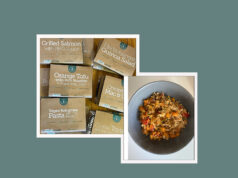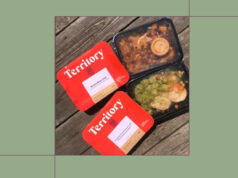Let’s be honest: There’s a “stereotypical body” problem in Pilates—even though any body that does this exercise is indeed a Pilates body.
If you’re a beginner, don’t fit the stereotypical Pilates body type, or have a physical limitation that keeps you from doing a standard version of a move, there should be no embarrassment in making the proper Pilates modifications. Unfortunately, mat Pilates instructor Angell Foster often sees clients feel shameful about it.
“I wish we could stop viewing needing to modify with ‘not being strong enough,’” Foster says. “Modifying doesn’t mean the move is no longer difficult. It just allows you the opportunity to access the move with proper form that won’t cause injury.”
Although providing different options for movements should be the standard for any fitness class or professional, Foster adds that this is often not the case. That’s what leaves many people to feel excluded from Pilates and other fitness routines.
“Pilates has been such a great movement practice for me because of the way it challenges my body,” Foster says. “There are some moves that I cannot access in the traditional sense based on my body type—but that doesn’t mean I should be excluded.”
And neither should you: If you find classic Pilates moves inaccessible, try these Pilates modifications from Emily Kucharczyk, reformer Pilates program lead at Fit Athletic Club, and demonstrated by Foster.
“I wish we could stop viewing needing to modify with ‘not being strong enough.’ Modifying doesn’t mean the move is no longer difficult. It just allows you the opportunity to access the move with proper form that won’t cause injury.” —Angell Foster, Pilates instructor
1. The hundred modification: Hundred with bent knees
Although the hundred is a classic Pilates move, keeping your legs fully extended can be challenging. This variation reduces strain on your lower back while still delivering the core engagement the move is known for.
“It’s great for beginners who are learning to properly engage their abdominal muscles,” Kucharczyk says. “Individuals who have longer legs, relative to their torso, will also get less pull from their lower back.”
Because it minimizes pressure on your spine, this modification is also ideal for those with lower back pain or tight hip flexors.

- Start by lying on your back, knees bent, feet flat on the floor, and arms long at your sides.
- Take a deep breath in. On your exhale, focus on contracting your intercostal muscles (muscle between your ribs) while drawing your ribs down and into the floor, pulling your back flat to the mat.
- Lift one leg at a time up to the tabletop position. Keep your knees bent at 90 degrees, shins parallel to the floor.
- Take a deep breath in. On your exhale, lift your head, neck, and shoulders off the mat while extending your arms forward.
- Pump your arms up and down while inhaling for five counts and exhaling for five counts, maintaining steady, controlled breaths.
- Repeat this pattern, aiming for a total of ten full breaths. This will bring you to a total of 100 arm pumps.
2. Plank modification: Kneeling plank
The plank is a powerful move for core and upper-body strength, but it can be overwhelming if you’re just starting out or have wrist or shoulder concerns. This kneeling variation reduces the load on your wrists and shoulders and lowers the overall intensity of the move, while still challenging your core.
“It makes it easier to maintain proper alignment without collapsing in the lower back,” Kucharczyk says. “It supports those with less upper-body strength or who may struggle with balance in a full plank.”

- Begin on all fours with your wrists aligned under your shoulders and knees under your hips.
- Walk your hands forward slightly, allowing your hips to fall in a straight line from your shoulders.
- Take a deep breath in, and on your exhale, draw your ribs down and in to contract the muscles between your ribs. Hold the connection to your rib muscles while continuing to take slow, steady, deep, and full breaths in and out.
- While keeping your core engaged, hold the position for the desired length of time, keeping your back from arching or rounding and shoulders away from your ears.
3. Shoulder bridge modification: Supported shoulder bridge with a block or ball between your knees
While the shoulder bridge is a fantastic way to improve your core stability, glute strength, and overall lower-body conditioning (while also promoting spinal flexibility and mobility!), not everyone can do this exercise without discomfort in their lower back and hamstrings.
“By performing this modification, the lower back has support, making it easier to lift your hips and hold the position with proper alignment,” Kucharczyk says. “The shoulder bridge is a great exercise for all bodies, especially those who have a more challenging time engaging their glutes.”
Having a ball or block between the knees also helps your pelvic floor activate—and allows the head of your femur (the thigh bone) to be positioned more laterally from the hip socket, which boosts the comfort level for your lower back.

- Lie on your back with your knees bent and feet flat on the floor, hip-width distance apart. Keep your arms resting at your side, palms facing down.
- Place a ball or soft yoga block between your thighs.
- Take a deep breath in, then on the exhale, draw your ribs muscles down and in toward the mat, creating a flat back.
- Take another deep breath in, and on this exhale, begin to lift your hips off the floor. As you lift, press into your feet and engage your glutes and hamstrings, maintaining a flat back.
- Hold the bridge at the top for a moment and lower yourself back down to the floor slowly. As you continue to lift and lower, drive your knees forward and pull your heels toward your bottom.
- Continue this exercise for the desired number of repetitions, focusing on fluidity and control, while engaging the front and backside of your body.
4. Single-leg stretch modification: Single-leg stretch with head support
Those with neck pain, a larger chest, or who are beginners will benefit from this modification because it reduces neck strain and allows for greater focus on deep core engagement.
“Clients often pull from their neck, rather than lifting the chest off the floor from deep core muscles,” Kucharczyk says. “Supporting your head with a small pillow or folded towel keeps the neck relaxed, allowing you to focus on engaging your core without unnecessary tension.”
This modification is a great way to ease into the exercise, while still maintaining proper alignment.

- Lie on your back with your knees bent and feet flat on the floor. Place a small pillow or folded towel under your head for support.
- Lift one leg at a time to the tabletop position, with your knees at a 90-degree angle and shins parallel to the floor. Bring your hands to the knee that’s in tabletop position.
- Engage your core by contracting your rib muscles, pulling your belly in toward your spine.
- Inhale as you draw your right knee toward your chest, placing your right hand on your right shin and your left hand on your right knee. Simultaneously, extend your left leg out at a 45-degree angle (or higher, if needed, to maintain core stability).
- Exhale as you switch legs, bringing your left knee toward your chest, placing your left hand on your left shin, and placing your right hand on your left knee. Extend the right leg out at the same time.
- Continue alternating legs in a smooth, controlled rhythm. Allow your head to relax into the pillow or folded towel, while maintaining a connection from the lower back to the floor and keeping your rib muscles engaged.
- Direct your breaths into your lower back, rather than expanding through your stomach, and continue the exercise for the desired number of repetitions.
5. Spine stretch forward modification: Seated spine stretch with elevated hips
This fundamental Pilates movement helps you with flexibility, proper posture, and core strength. It encourages lengthening through your spine and can counteract the effects of slumping or rounded shoulders.
“However, achieving a deep stretch in the spine while keeping your legs straight can be difficult, especially if you have tight hamstrings or injuries to the lower back,” Kucharczyk says.
Elevating your hips with a cushion or blanket helps you maintain straighter legs, allowing for a more effective and comfortable stretch.

- Sit on the mat with your legs extended and slightly wider than hip-width distance apart.
- Place a folded blanket or small cushion under your hips to elevate them.
- Reach your arms forward at shoulder height. Take a deep breath in and as you exhale gently, drawing your ribs in toward your spine and engaging your core muscles.
- Keeping your shoulders relaxed and away from your ears, inhale to prepare. On your next exhale, begin to roll your spine forward, starting with your head—then neck, upper back, mid-back, and lower back.
- Continue to reach toward your toes, ideally with flexed feet (you can point your toes if you have discomfort in your calves, hamstrings, or lower back). Focus on maintaining a long spine and avoid collapsing from your chest.
- Hold the stretch at your furthest point and inhale deep into your lower back, feeling your back expand. Exhale to see if you can deepen the stretch slightly without forcing yourself forward.
- Inhale as you begin to roll your spine back up one vertebra at a time, stacking your spine beginning at your lower, mid, and then upper back like a slinky.
- Continue the exercise for desired repetitions, focusing on fluidity and control with each movement.











